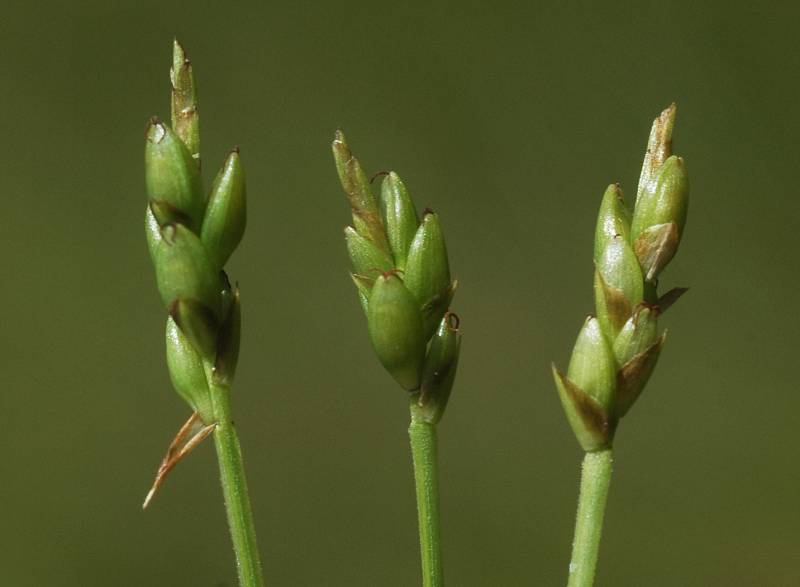Hosted by the University of Washington Herbarium, Burke Museum
Publication: Kongl. Vetensk. Acad. Nya Handl. 24: 139. 1803.
Origin: Native
selected vouchers: WTU
Notes: FNA23: "Carex leptalea has the widest geographic range of any North American sedge. Plants vary in color, stature, length of spikes, length, shape, and degree of overlap of periginia, and color and shape of apex of pistillate scales (other minor characteristics are indicated in J. A. Calder and R. L. Taylor 1965 and B. Boivin 1967–1979). Three morphotypes probably warrant formal taxonomic recognition. Because they intergrade to some degree, the modern tendency is to treat them as only extreme phases in a wide-ranging, complex species. A major study is needed to clarify the taxonomy.
The typical phase, Carex leptalea subsp. leptalea, tends to be a more slender plant with thinner culms, narrower leaves and smaller spikes and perigynia (2.5–3.5 mm) than subsp. harperi and subsp. pacifica. Its pistillate scales, which vary in shape of apex, are yellowish green to brownish, and its achenes are obtusely angled. That phase is quite uniform and occurs throughout much of the continent, extending south to the uplands of North Carolina, Tennessee, Missouri, South Dakota, New Mexico, and California. Small plants from Alaska, Yukon, Alberta, British Columbia, and eastward, var. tayloris, are extremes of the phase.
The most distinct variant, Carex leptalea subsp. harperi [C. harperi, C. leptalea var. harperi], has longer [3.4–4.9(–5.4) mm], more slender perigynia that overlap more strongly and are subtended by whitish scales. Its spikes are, on the average, longer, and its achenes are sharply angled. The phase occurs from Florida to Texas, north to New Jersey, Pennsylvania, Indiana, and Missouri. Various authors have reported it from farther north, but it is doubtful whether subsp. harperi occurs beyond the range given.
Carex leptalea subsp. pacifica [C. jimcalderi] resembles subsp. harperi in its longer perigynia [(3–)3.4–4.7 mm)] and proximal pistillate scales with the midvein excurrent into a cusp or awn, but differs in its brown-margined scales and obtusely angled achenes. This phase occurs only west of the Coast-Cascade Mountains from the Alaska Panhandle south through the offshore islands and mainland coast of British Columbia to Thurston County, Washington."
References: (none)

